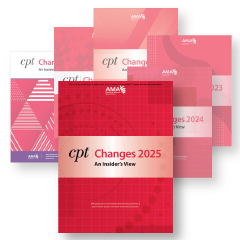by Kem Tolliver, CMPE, CPC, CMOM
Dec 27th, 2022
Let's take a trip back in time. A time when the healthcare industry was bound by 14,000 diagnosis codes via ICD-9-CM to explain illnesses and injuries. During that time, our medical record documentation was limited based on the tools we had to report diagnosis codes. That time is gone. Since October 2015, we’ve had time to adjust to the increase in our ability to explain the complexity and specificity of our patient's illnesses via ICD-10-CM.
Fast-forward from 2015 to the present. Our ability to accurately diagnose and treat conditions has greatly increased as a result of the expansion of ICD-10-CM. Think about it, how in the world would we have been able to handle a Public Health Emergency (PHE) utilizing ICD-9-CM as our diagnosis infrastructure?
Not only have we quadrupled the number of diagnosis codes at our disposal over the last 7 years to paint a clearer picture of our population’s health status, but we also have financial drivers such as Risk Adjustment Factors (RAF) that are moving us in the direction of Clinical Documentation Improvement (CDI).
Table 1: ICD-9-CM and ICD-10-CM Comparison
| Diagnosis Code Tools | ICD-9-CM | ICD-10-CM | Clinical Documentation Improvement; |
| V Codes; | Segmented into its own classification | Included within the main code classification | Placed in a sensible location for increased utilization |
| E Codes | Segmented into its own classification | Included within the main code classification | Placed in a sensible location for increased utilization |
| Definitions | Vague / unclear in some instances | More clarity and direction | Clearer definitions take the guesswork out of code selection |
| Laterality | Modifier usage assisted with describing laterality | Included in ICD-10-CM codes as applicable | Significant descriptor for bi-lateral anatomic sites |
| Specificity | Lacked specificity; which required frequent use of unspecified codes | Anatomical site, severity and etiology are inclusive of codes | Minimizes the need to use vague diagnoses to allow better treatment plans |
| Expansion | Limitations on code expansion due to the code design | “X” placeholder is a proactive approach to code expansion | Opportunity is there to now document new illnesses with fewer limitations |
When we think of payer reimbursement, our thoughts turn to CPT codes and the associated Relative Value Units (RVUs). On the other side of the coin are our diagnosis codes; which play a huge role in Risk Adjustment Factors (RAF) as a component of reimbursement.
Diagnosis code optimization is a major factor of Hierarchical Condition Category (HCC) coding to improve our reporting of our patient population's illness severity – which in turn justifies reimbursement needs to care for sicker and “riskier” patient populations.
Payer sources rely on healthcare practitioners medical record documentation to fund populations healthcare. When our practitioners report lower acuity diagnosis codes, we give the false impression that beneficiaries are healthier than they truly are. Doing so, triggers payer sources to miscalculate healthcare spending – which leads to decreased provider reimbursement – which may lead to limitations in healthcare resources.
Table 2: Risk Adjustment Factor (RAF) Utilization Cycle
| Provider | Payer |
| Selects low acuity, unspecified diagnosis codes and/or does not utilize HCC’s | Prepares healthcare spending budget |
| Continues to treat patient population based on high acuity not previously reported | Obtains providers reported HCCs which are used to calculate RAF |
| Receives decreased reimbursement or is ineligible for shared savings | Decreases future healthcare spending/provider payments due to low acuity RAF |
We have a ton of diagnoses that can be used to improve the reporting of our patients' conditions, keep our population healthier by quantifying their illness severity through proper medical record documentation and increased specificity in diagnosis selection. The question we need to ask ourselves is, “What’s stopping us and how can we turn this around?”
Solutions
A great starting point is to review medical record problem lists and compare them to the assessment & plan to ensure issues are being addressed during that encounter. It’s also a good idea to clean up the problem list and remove/replace unspecified codes with more specific codes. If a diagnosis was not addressed during that encounter, it should not be included.
If you haven’t already gathered, the use of unspecified codes should only be used when a more specific code is not available. Educate your practitioners on the downside of using unspecified codes to change their code selection habits. Co-morbidities, complications and manifestations are significant components of HCC Coding so don’t leave them out.
There are Chronic Care Management (CCM) mechanisms that allow for the treatment and tracking of patients with chronic illnesses and HCC’s. We can utilize CCM CPT codes for regular maintenance of our patient population. There is also the opportunity to prevent or manage hospital readmissions through Transitional Care Management (TCM) CPT codes. As an added bonus, these CPT codes also have higher reimbursement than the typical E/M codes. This is our opportunity to engage with patients who are being discharged from the hospital and keep them in care. We have the power to leverage HCC coding to improve the overall healthcare system by optimizing our use of diagnosis codes.


 Quick, Current, Complete - www.findacode.com
Quick, Current, Complete - www.findacode.com